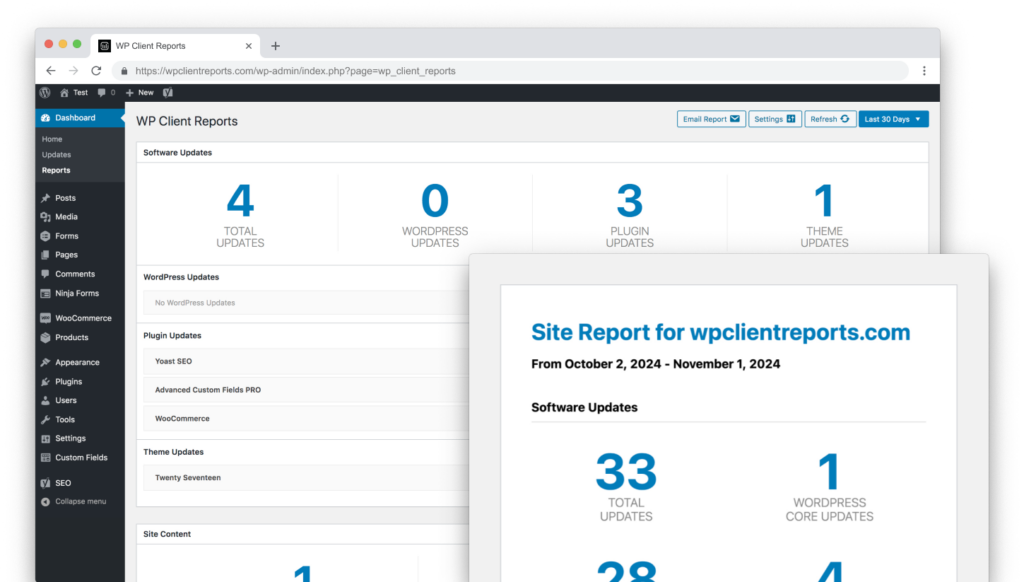Offering WordPress maintenance to your clients is a great way to offer excellent client service as well as start to make some reoccurring incoming each month.
But when you first start out, it can be hard to know what to do when you start your maintenance. Am I doing enough? Should I be doing something else?
First, just know that there is not a right or wrong answer, everyone offers different variations and different clients may need different things. Take these as suggestions and figure out how they match with what your clients may or may not need.
1. WordPress Updates
Keeping WordPress up to date is an important aspect of website security and is especially important for your clients to make sure their sites are not vulnerable to bugs and hacks that have been found in older versions.
2. Plugin Updates
Plugins are probably even more of a problem as they update often and often have issues with compatibility with WordPress itself, or conflicts with other plugins. Managing this for your clients is a big plus for them.
3. Theme Updates
Nowadays, many themes are much more than a simple visual template. They have whole plugins built into them and a lot of functionality. It is just as important to keep them up to date as well.
4. Backups
Before running any software updates, it is VERY important to run a backup of the website so that if anything were to go wrong, you can revert back and figure out the problem in a different way. This will give both you and the client peace of mind.
5. Visual Inspection
After running updates it is helpful to go to the website (clear any caches that might prevent you from seeing the most up to date version of the site!) and browse the website for awhile to make sure everything is running smoothly and no update has changed how something looks or how it works.
6. Client Reports
Clients like to be aware of what you are doing and what they are paying you for. A simple client report can go a long way in showing the value of what you are doing and providing a regular check in to show that you are looking after their website. These reports can also offer valuable information to a client like number of visitors, form submissions, and backup activity. Of course, I’m biased, but you should check out my site maintenance reporting plugin I offer!
7. Run a Security Check
There are several services and plugins that offer a security check where they can look over your website and make sure that there are no known vulnerabilities and that you are not on a search engine’s blacklist currently. This gives a lot of peace of mind for a client.
8. Comment Management
If your client has an active blog, deleting their spam comments and making sure there isn’t a lot of cruft in that area is another way to show that you are looking after the site.
9. SEO Report
Some website maintenance plans can include an SEO report to show your client how certain keyword rankings have changed over the given month or other time period. This probably isn’t required, but would be important if you are engaged with the client in dealing with their search engine results.
10. Link/Image Monitoring
If your client has a huge site, finding old broken links on the website is a valuable thing. Fixing internal links can be easier, but often it is the external links that wind up being broken. You can report these links to your client and let them choose what to do about them.
11. Website Speed Monitoring
Not everyone chooses to get into this, but if you have already optimized your client’s site for speed, you may want to choose to help them keep it that way. Doing a regular check of their website speed and making sure the client understands how to load in optimized images is important.
